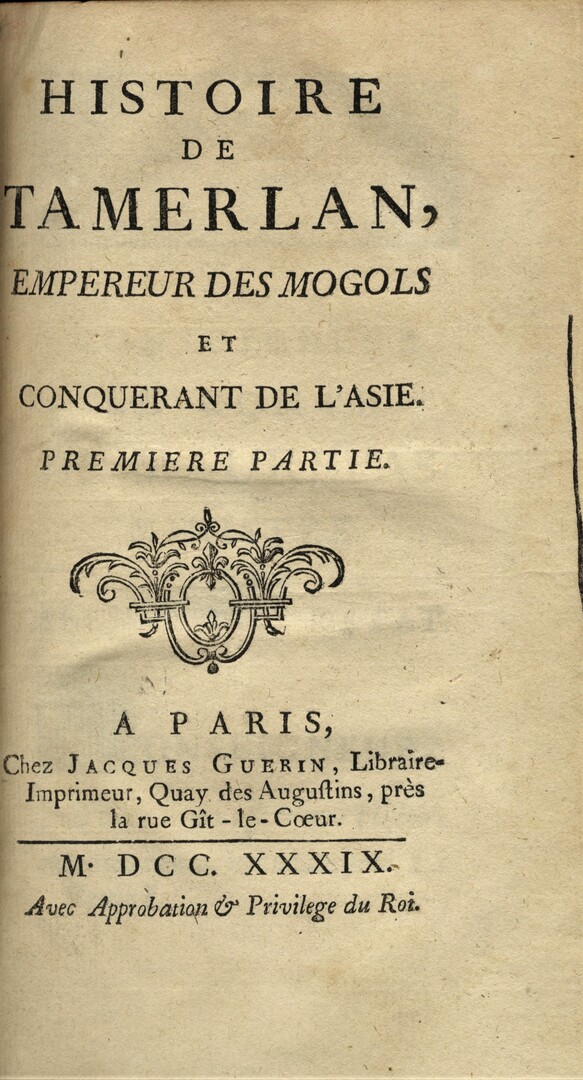Histoire de Tamerlan, Empereur des Mogols et Conquérant de l’Asie. TWO VOLUMES.
Sharaf al-Din / Jean-Baptiste Margat (1689-1747).
Synopsis
Tamelan (Timur) was a was a Turko-Mongol conqueror and the founder of the Timurid dynasty in Central Asia. he led military campaigns across West, South and Central Asia and emerged as the most powerful ruler in the Muslim world after defeating the Mamluks of Egypt and Syria, the emerging Ottoman Empire and the declining Sultanate of Delhi. From these conquests he founded the Timurid Empire, although it fragmented shortly after his death. He is considered the last of the great nomadic conquerors of the Eurasian steppe, and his empire set the stage for rise of the more structured and lasting gunpowder empires in the 1500s and 1600s. Timur envisioned the restoration of the Mongol Empire of Genghis Khan.
The earliest known history of Timur’s reign was Nizam ad-Din Shami’s Zafarnama, which was written during Timur’s lifetime. Between 1424 and 1428, Sharaf ad-Din Ali Yazdi wrote a second Zafarnama drawing heavily on Shami’s earlier work. Ahmad ibn Arabshah wrote a much less favorable history in Arabic. Arabshah’s history was translated by the Dutch Orientalist Jacobus Golius in 1636.
As Timurid sponsored histories, the two Zafaramas present a dramatically different picture from Arabshah’s chronicle. William Jones remarked that the former presented Timur as a “liberal, benevolent and illustrious prince”, while the latter painted him as “deformed and impious, of a low birth and detestable principle.
This work is considered as a resume for Sharf al-Din history of Timur, it was proscribed by the French government because it contained what was believed to be a thinly disguised unflattering portrait of the Duc d’Orléans
Bibliographic references: Barbier III 736; Brunet 28267; Cordier, Sinica, 2772; Quérard V 528-29.








